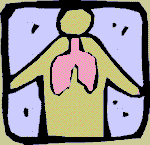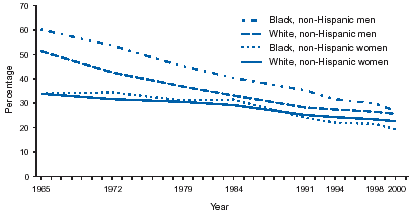Neuroscience For Kids
Nicotine and the Brain
 A complete list of the reasons to avoid smoking and chewing tobacco is not
necessary here, but for starters, how about lung cancer, lip cancer,
throat cancer, respiratory problems, heart disease and bad
breath?
A complete list of the reasons to avoid smoking and chewing tobacco is not
necessary here, but for starters, how about lung cancer, lip cancer,
throat cancer, respiratory problems, heart disease and bad
breath?

Tobacco contains nicotine. Nicotine is a drug. Therefore, when people smoke or chew tobacco, they are using a drug.
Brief History of Tobacco
 Christopher Columbus and his crewman on their
voyage to the "New World" were the first Europeans to see tobacco smoking.
The tobacco plant is called Nicotiana tabacum and is named after an
early importer named Jean Nicot. A water/nicotine mixture has been used
as an insecticide since 1746. In 1828, nicotine was isolated from the
leaves of the tobacco plant.
Christopher Columbus and his crewman on their
voyage to the "New World" were the first Europeans to see tobacco smoking.
The tobacco plant is called Nicotiana tabacum and is named after an
early importer named Jean Nicot. A water/nicotine mixture has been used
as an insecticide since 1746. In 1828, nicotine was isolated from the
leaves of the tobacco plant.
Effects of Nicotine on the Nervous System
 In tobacco smoke,
nicotine "rides" on small particles of tar. When the smoke with this
nicotine/tar mixture gets to the lungs, the nicotine is absorbed quickly -
nicotine reaches the brain about eight seconds after the smoke is inhaled.
American cigarettes contain about 9 mg of nicotine, but because much of
the nicotine is burned off, a smoker gets about 1 mg of nicotine in every
cigarette. Nicotine reaches the central nervous system in about 3-5
minutes when tobacco is chewed.
In tobacco smoke,
nicotine "rides" on small particles of tar. When the smoke with this
nicotine/tar mixture gets to the lungs, the nicotine is absorbed quickly -
nicotine reaches the brain about eight seconds after the smoke is inhaled.
American cigarettes contain about 9 mg of nicotine, but because much of
the nicotine is burned off, a smoker gets about 1 mg of nicotine in every
cigarette. Nicotine reaches the central nervous system in about 3-5
minutes when tobacco is chewed.
Smoking can be stimulating or relaxing - it depends on a person's mood
and
dosage of nicotine. Nicotine acts on the central and peripheral nervous
system. The rapid effects of nicotine include:

- Increases in blood pressure and heart rate
- Faster respiration
- Constriction of arteries
- Stimulation of the central nervous system.
Percentage of Cigarette Smokers in the United States (over the
age of 18 years)

Image: Morbidity and Mortality Weekly
Report, October 10, 2003, Vol. 52 No. 40
 Long
term exposure to tobacco and nicotine increases the chances of cancer and
results in addiction and dependence. Exactly how nicotine produces
addiction and dependence is not clear, but there are some theories. In the
brain, limbic pathways that use the neurotransmitter
dopamine
are affected by nicotine and may be responsible for
some of the addictive properties. It is clear though, that nicotine is
one of the most addicting substances known...just ask anyone who has tried
to quit smoking. Common withdrawal symptoms in people who are trying to
"kick the habit" of tobacco include:
Long
term exposure to tobacco and nicotine increases the chances of cancer and
results in addiction and dependence. Exactly how nicotine produces
addiction and dependence is not clear, but there are some theories. In the
brain, limbic pathways that use the neurotransmitter
dopamine
are affected by nicotine and may be responsible for
some of the addictive properties. It is clear though, that nicotine is
one of the most addicting substances known...just ask anyone who has tried
to quit smoking. Common withdrawal symptoms in people who are trying to
"kick the habit" of tobacco include:

- Anxiety
- Depression
- Headaches
- Fatigue
"To cease smoking is the easiest thing I ever did. I ought to know, because I've done it a thousand times." - quote from Mark Twain
Did you know? |
|
For more information about nicotine, see:
- Cigarette Ads - A Promise Broken
- Cigarette Smoking
- American Cancer Society
- The Dope on Nicotine - PBS/NOVA
- Nicotine Addiction
- Smokeless Tobacco
- READ ABOUT NEUROTRANSMITTERS
Information about other drugs:
| Alcohol | Amphetamines | Caffeine | Cocaine |
| Heroin | Inhalants | LSD | Marijuana |
| Nicotine | Ecstasy | Rohypnol | 1,4-Butanediol |
| GHB | Barbiturates | PCP | Hallucinogenic Mushrooms |
Copyright © 1996-2014, Eric H. Chudler All Rights Reserved.
